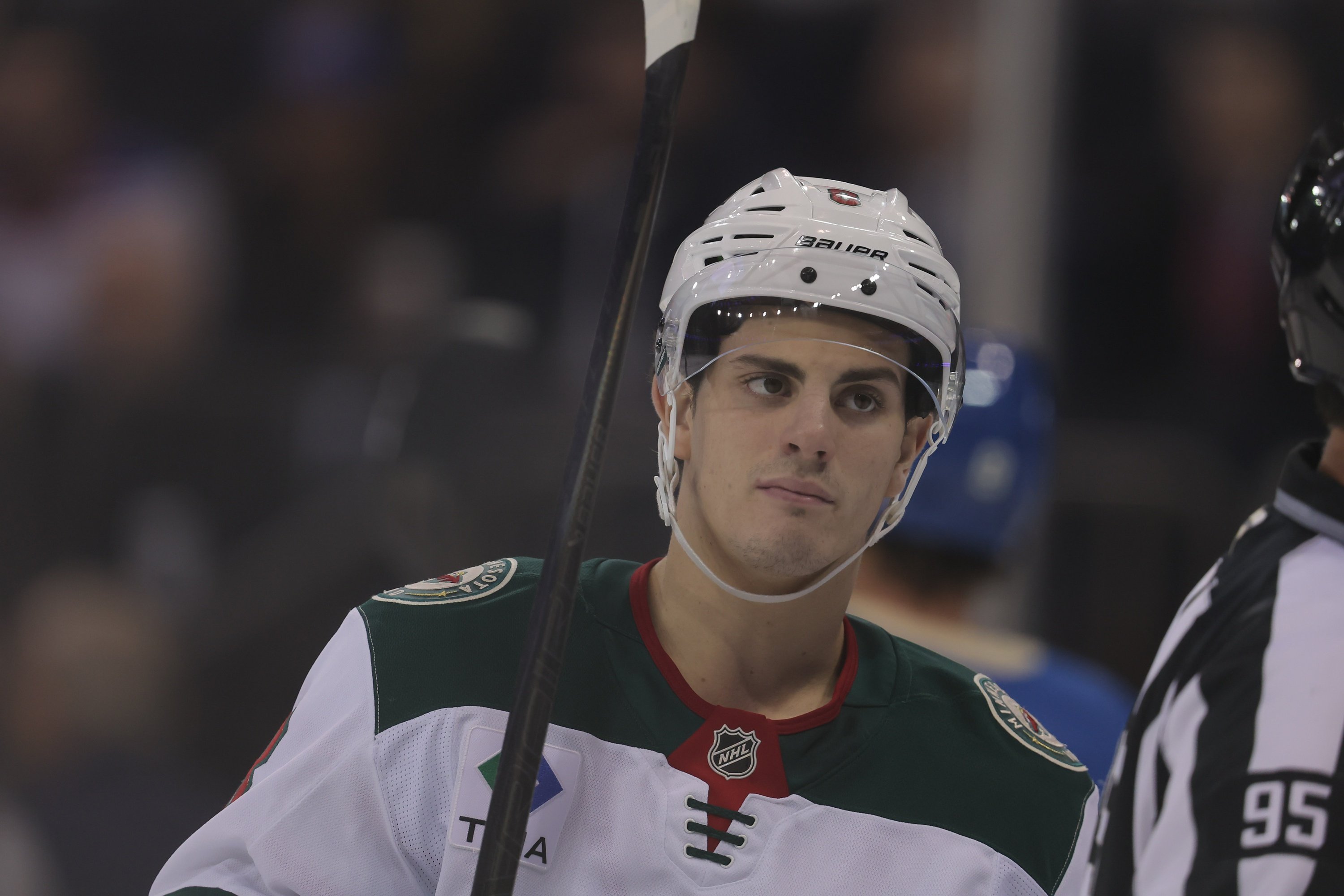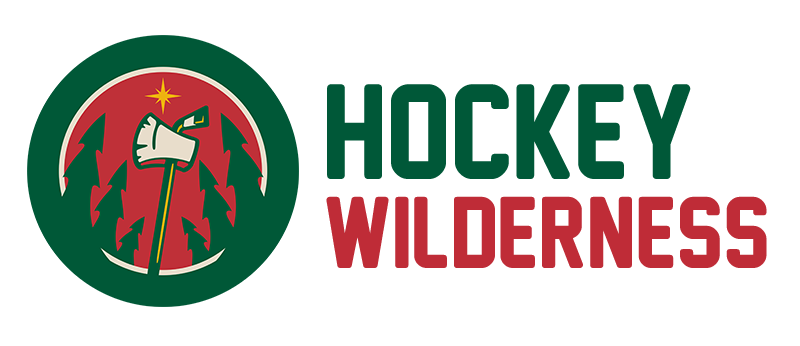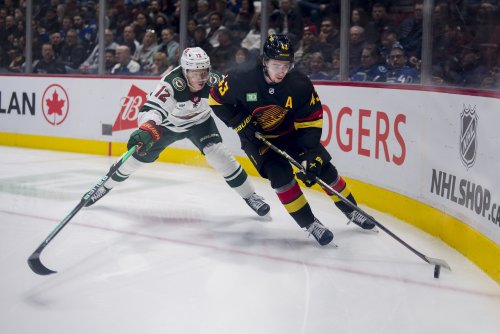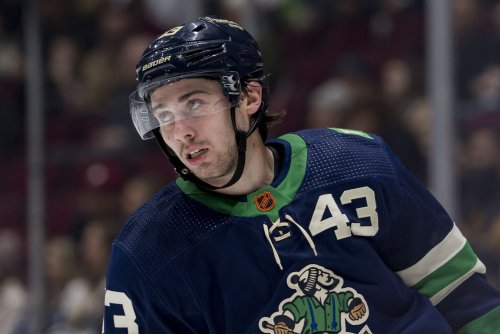
The Minnesota Wild lost 7-6 in overtime to the San Jose Sharks last Sunday, despite being heavily favored at -220 (FanDuel listed the Sharks at +185). The Sharks entered the game and were 1-5-2, dead last in the standings. The Wild also had a tough start to the season, having lost 5 of their last 6 games, including a 6-2 loss to the Utah Mammoth the night before. Beating San Jose would’ve been a chance to get back on the right track.
Against San Jose, head coach John Hynes paired young defensemen David Jiricek, 21, and Zeev Buium, 19, together. Jiricek has 65 career games, 2 goals, and 11 assists. Buium has 8 points in 10 games and a strong offensive mindset that occasionally gets him into trouble. Potentially a risky move, but ultimately forward-thinking.
The Wild need to win in the regular season, but they also need to develop a playoff-caliber roster. If you’re going to throw inexperienced players into the metaphorical deep end, now is the time. Buium and Jiricek aren’t going to develop on the bench, and the other players are more likely to stay healthy if the Wild don’t overwork them. Minnesota has plenty of time to claw back the points later.
Hynes was also cautious about playing the pair together, and they both played roughly 4 minutes less than their average TOI/G this season against San Jose.
When Buium or Jiricek play with a veteran, they’re more likely to be bailed out by their defensive partner, and they have to be less wary of mistakes their partner might make. By pairing them, Hynes forced them to take greater responsibility for themselves and their partner. With one minute left in the first, Jiricek loses a puck battle in the offensive zone, and Alexander Wennberg gets what would’ve been a breakaway if Buium hadn’t caught up and knocked the puck away.
This game gave Buium more opportunities to react quickly and make up for the turnovers, since he has had to cover more for Jiricek than he would for Faber or Jared Spurgeon.
With 9:53 left in the second, Buium passes to Jiricek, who tries to stickhandle the puck. Collin Graf knocks it free, and the Sharks get a 2-on-1 against Buium. Graf shoots wide of the net, and it becomes a learning moment instead of a goal against. The lesson? You can’t stickhandle on the blue line. To his credit, Jiricek doesn’t make this mistake again.
One of the biggest differences between the Buium-Jiricek pairing and the more experienced defensive pairings is how quickly they move the puck. They’re faster physically, but they also have better awareness, which is ultimately what makes their plays so much faster. I could consistently see Buium and Jiricek looking for a pass, weighing options. Spurgeon and Brock Faber have often made a pass before I've had a chance to process what I’m watching.
Matt Boldy picks up the puck down low in the offensive end and sends it up to Faber, who catches and releases it to Kirill Kaprizov. Kaprizov one-times it to Ryan Hartman out front, who also catches and releases the puck into the net. Stickhandling is important, but being able to gain control and move the puck so quickly is what turns this play into a goal.
Kaprizov’s quick passing and awareness are part of his brilliance. Vincent Desharnais receives a pass, but the puck bounces off his stick, and Kaprizov has it before Desharnais can react. Kaprizov gets a breakaway and has full control of the puck right out front, and could take the shot before the San Jose defensemen reach him.
Marco Rossi is diagonally 15 feet back, not even in Kaprizov’s field of vision. Nine out of ten NHL players are taking that shot, but Kaprizov knows Rossi is there. He knows Rossi shoots with his left hand, and he executes a flawless pass that Rossi nets in an instant. The presence of mind to pass instead of shooting here is what sets Kaprizov above the rest.
Meanwhile, consider this play by Buium on the power play. He picks up the puck and has Wennberg right on him. He stickhandles the puck and stops moving his feet as he decides what to do with it, then quickly backhands it back to Faber when Wennberg is about to knock it away. It’s a good play, and the Wild end up scoring, but it’s also a good example of that extra second Buium sometimes needs. He also makes the play once he’s already backed into a corner.
Buium tends to carry the puck more than headman it immediately. He’s a great player because of his offensive mindset, but sometimes he’d create more offense by using his teammates rather than carrying the puck himself.
The more experienced players are also more effective at keeping the puck in, which is critical to reducing offensive and defensive zone time. The ability to step up effectively diminishes the other team’s opportunities to break the puck out. Spurgeon had several close calls where he was able to keep the puck in the offensive zone, like when he managed to bat it down and handle it here.
The less experienced players are less likely to take these chances or succeed when they do. Jiricek and Buium got beaten a couple of times, but they also managed to recover.
Pairing Jiricek and Buium highlighted the gaps in both players' games, and they cleaned up some of their mistakes as the game progressed. I don’t see Hynes keeping this pairing long-term, but it was a good experiment without long-term risk because it fostered player development.
Think you could write a story like this? Hockey Wilderness wants you to develop your voice, find an audience, and we'll pay you to do it. Just fill out this form.
-
 1
1








Recommended Comments
Join the conversation
You can post now and register later. If you have an account, sign in now to post with your account.
Note: Your post will require moderator approval before it will be visible.